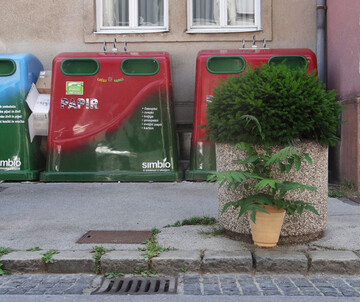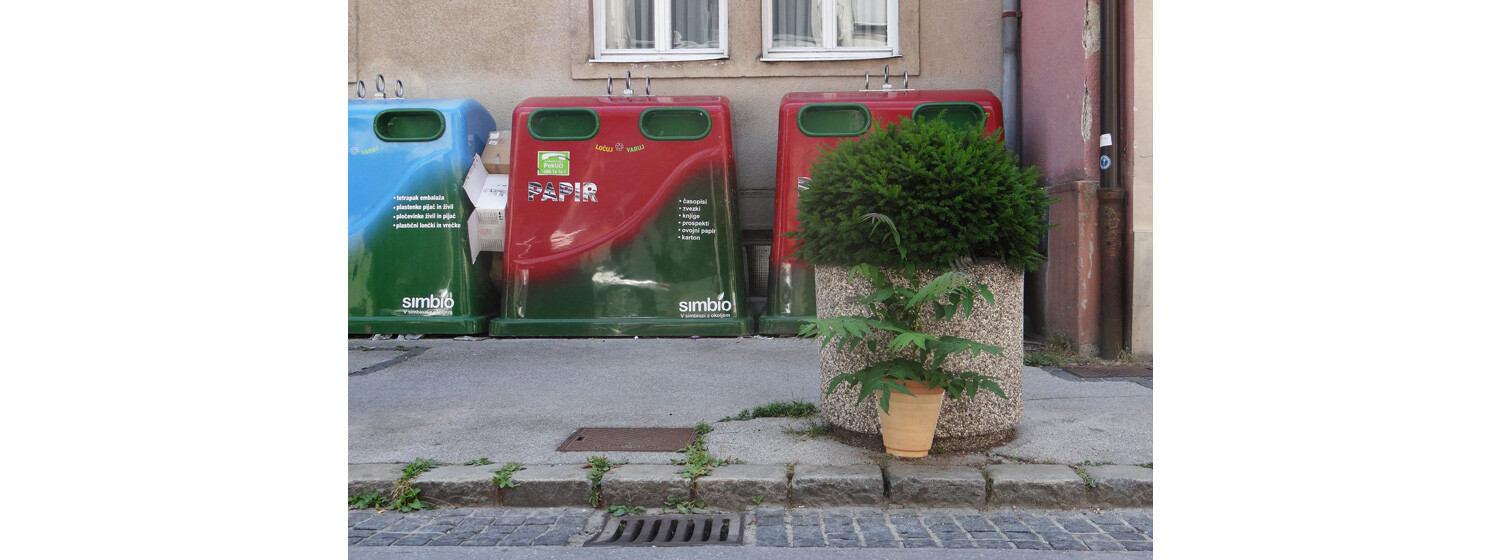13.12.2023 to 14.01.2024 - MQ Pop-Up Schauraum
Host: MQ Cultural Tenants
MQ Artist-in-Residence DNLM: Transiently
ART


MQ Artist in Residence DNLM: Transiently
Curated by Hana Ostan Ožbolt
Opening: 13.12.2023, 18h with Artist Talk
14.12.2023–14.01.2024, MQ Pop Up Schauraum
DNLM (Danilo Milovanović) works primarily with and within public spaces, creating site-specific, fleeting, sharp-witted urban interventions or subtle situations confronting social dynamics, issues of increasing gentrification in local environments, and everyday forms of resistance. Coinciding with his artist residency in the MuseumsQuartier, his solo exhibition Transiently brings together eight works from recent years (2016–23), which in this particular constellation primarily challenge hierarchies in the organization of the city as well as environmental consciousness. All the projects presented inhabited the public space of Prague and various Slovenian towns; in the exhibition context, they now exist solely owing to their photo and video documentation, occasionally accompanied by physical remains, objects, or fragments from the interventions.
In Plastic Makes It Static (2017), DNLM bottled the water from a public fountain in more than 600 found empty plastic bottles (from 27 brands) as a response to the privatization of drinking water and water resources, leaving the fountain waterless. In Product (2017), he visited supermarkets, collected brand-name stickers from pieces of the (mostly imported) fruit being sold, and stuck those same stickers on the ripening fruit of a living local tree.
Switch (2017–18) called attention to the unusual weather conditions we are increasingly facing in various seasons as a result of climate change—in some geographical regions, the seasons are gradually merging into one. A large mass of tree leaves that the artist collected in autumn and preserved and stored throughout the winter were repositioned under the same tree in the middle of the summer.
Projects Intreeder, Re-post, and Outcrying the Hawkers all invoked visual pollution and the increasing presence of advertising surfaces in public spaces. In Intreeder (2016/17), DNLM planted trees in front of the endless lines of billboards that have replaced tree-lined avenues. The action consisted of two variations, one in Ljubljana and the other in Novo Mesto, the latter left unchanged for a period of four months. In Re-post (2018), he collected layers of smaller-size advertising posters (glued over each other in many places in cities), turned them into a sort of papier-mâché, and returned the recycled, thick greyish paper back to the location where it was originally found—but now lacking its primary function, announcing information. In the most recent, quite extensive series, Outcrying the Hawkers (2023), he questions the role of the hayrack (Slovenian, ‘kozolec’), a freestanding, vertical drying rack (used mostly for hay) found primarily in Slovenia. Regarded as a distinctive form of vernacular architecture that marks Slovene identity as a symbol of the local countryside, the hayrack lost its agricultural function due to urbanization and has been all too often transformed into a billboard stand. ‘If we can have ads on hayracks, why not have hay on billboards?’, the artist asks.
In Cultivation (2018), DNLM transformed unwanted weeds in urban areas into decorative and domesticated potted plants, while in Targets (2020), the gesture of removing coloured marks from forest trees selected for felling signified a de-labelling of them as unfitting, sick or old, and thus needing to be cut down.
The artist’s guerrilla and DIY actions, unexpected and non-invasive gestures in the urban landscape, for some barely noticeable, hold a moment of surprise and a political dimension. However, there is a certain lightness and playfulness to all these interventions, Milovanović’s practice engages unpretentiously, yet actively, with the impacts of urban planning, gentrification, and the commercialization of the city, which lead(s) to economic segregation and social inequality, —with the latter also assuming a crucial role in the extent to which climate changes affects different parts of the population.
DNLM (Danilo Milovanović) was born in 1992 in Bosnia and Herzegovina, where he grew up, before moving to Ljubljana (Slovenia) for his studies at the Academy of Fine Arts in Design. While he lives a nomadic life, he is based primarily in Ljubljana. In recent years, he has exhibited widely; among others, he held solo exhibitions at Pŕažirna AB3 (Prague), U10 Gallery (Belgrade), EC124H (Copenhagen), Tobačna 001 Gallery (Ljubljana), AKSIOMA – Institute for Contemporary Art (Ljubljana) and was part of multiple group exhibitions, among others, Urban camouflage, Bienalsur – CCE Montevideo (Montevideo), Ring 8, Begehungen festival (Chemnitz), We’re not like them, Museum of Modern and Contemporary Art (Rijeka). He is currently having a solo exhibition at MSUM+, Museum of Contemporary Art Metelkova and is part of the 35th Ljubljana Biennale of Graphic Arts (artistic director Ibrahim Mahama), both on view until mid-January 2024.
The exhibition is kindly supported by SKICA, Slowenisches Kulturinformationszentrum, Wien.
Photo: DNLM, Cultivation, 2018. Courtesy the artist